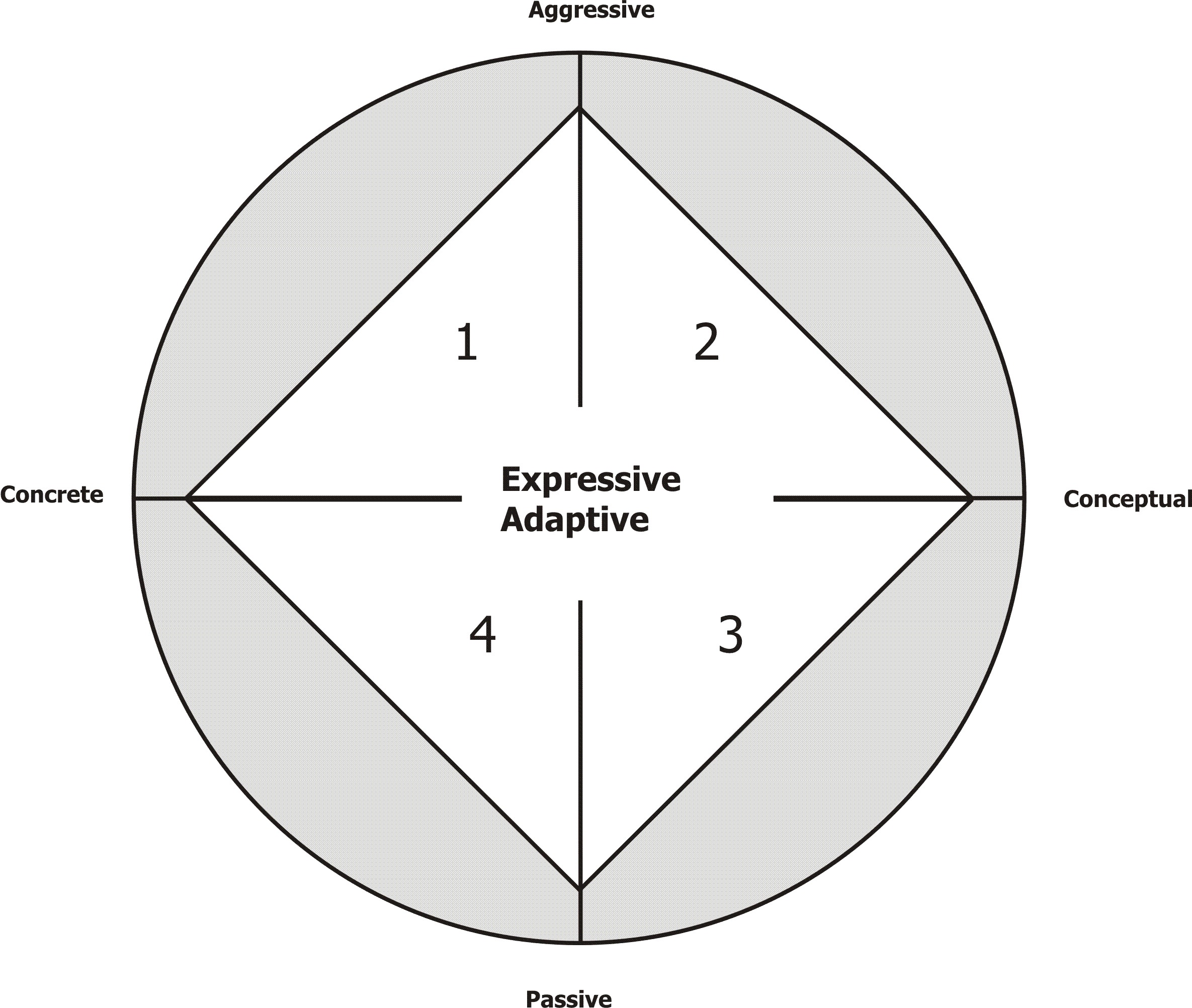To understand the dynamics in a group/team it is very important to know the communication profiles of the individuals in the group/team. A profile consists of two factors namely communication style and thought pattern.
Communication Style: Communication style can range from passive on the one end of the scale to aggressive on the other with passive-aggressive in between
Thought pattern: There are concrete thinking and conceptual thinking. Concrete thinkers apply linear logic to problem-solving – give them just the facts. Conceptual thinkers thrive on intuition and imagination. They are creative, innovative problem solvers.
The following diagram shows the different communication profiles:

Communication Profiles
The vertical axis refers to communication styles. Within the diamond, communication style ranges from moderately expressive at the centre up to a more highly expressive style – animated, exuberant or extroverted. From the centre, the degree of expressiveness decreases to a mild-mannered style – less forthright, more reserved, sometimes introspective. People in the upper half, in quadrants 1 and 2, tend to respond quickly and make decisions quickly. They sometimes change just because they are bored. People in the lower half, in quadrants 3 and 4 tend to be more cautious. Before making a decision they deliberate. They prefer the status quo.
Thoughts patterns appear along the horizontal axis. As the term ‘adaptive’ suggests someone at the centre can easily adjust their thinking. Moving to the right indicates an increasing degree of conceptual thinking; to the left, the pattern of thinking becomes increasingly concrete.
Extremes occur in the grey circle that surrounds the diamond. Such extremes create conflicts and can disrupt teamwork. On the other hand, a successful team should consist of people in all four quadrants.
Arredondo (2000, pp.60-67) has different titles for each profile but she warns against labelling people according to their category. It only provides a greater understanding of ourselves and others. With that understanding, we gain ideas of how to adapt our communication when interacting with people. People are adaptable by nature and project different personae in different situations.
Click here to view a video that explains assertiveness and the four communication styles.
